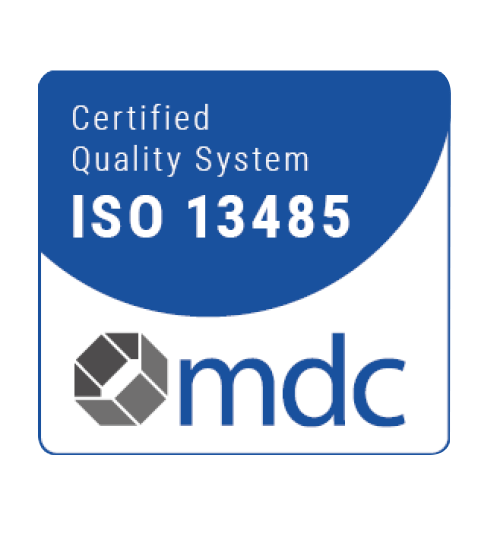
After all, there is nothing quite like the confidence of a dazzling, straight smile, and never has it been so easy to obtain this, thanks to advances in dental technology. The world of orthodontics has experienced significant progress which provided multiple teeth straightening options that assist teenagers together with adults. Whether discreet or fast and effective, there is something for everyone; various teeth straightening solutions exist to serve every individual need, even in 2025.
Continue reading this guide as we’ll explore the best teeth straightening options to achieve flawless smiles in 2025.
What is Teeth Straightening?
Teeth straightening is a dental procedure to organize teeth that are out of position along with unaligned jaws. Aesthetics is one of the primary goals of teeth straightening, but it also provides several practical advantages:
Proper chewing & biting:
A proper dental alignment allows better food chewing capacity, which eases digestive disorders.
Easier Cleaning:
A person can achieve better dental care with straight teeth since cleaning becomes simpler, which lowers the risks of tooth cavities, plaque, and gum disease.
Reduced Jaw Pain & TMJ Issues:
Oral discomfort caused by improperly positioned teeth leads to jaw strain that creates temporomandibular joint (TMJ) disorders and jaw and head pain. Proper teeth alignment alleviates these issues.
Improvements in Speech:
Clear pronunciation along with better speech patterns results from teeth alignment because well-positioned teeth enhance speech quality.
Confidence Boost:
When teeth are in proper alignment it results in enhancing self-esteem and creates more enjoyable social interactions.
Better Long-Term Oral Health:
Alignment of teeth minimizes the chance of uneven wear, enamel destruction, and gum deterioration in the long term.
Best Teeth Straightening Options for a Perfect Smile
Many approaches to teeth straightening options exist as a patient’s options in 2025. Let’s explore each in detail:
1. Traditional Metal Braces
Traditional braces are among the most reliable dental appliances for treating severe dental problems. The orthodontist fits metal braces with wires which they periodically adjust. The dental devices demonstrate excellent durability while maintaining consistent tooth position throughout treatment.
- Best for: Severe misalignment and bite correction.
- Treatment Time: 18-36 months.
- Pros: Most effective for complex cases, durable, cost-effective.
Cons: The drawbacks include patients being able to see their braces and they can initially be uncomfortable for some people, although they need adjustment every so often.
2. Ceramic Braces
The working principle behind ceramic braces matches traditional metal braces but uses brackets with clear or tooth-colored materials, improving their discreet appearance. People who need traditional braces with a discreet appearance should consider ceramic braces as an excellent solution.
- Best for: Such braces suit individuals who want the advantages of traditional braces while also choosing a more aesthetic solution.
- Treatment Time: 18-36 months.
- Pros: Less noticeable than metal braces, effective for all types of misalignment.
Cons: Brackets from ceramic braces become noticeable when stains form because patients fail to maintain adequate care. They also typically cost more than traditional metal braces.
3. Lingual Braces
This orthodontic option differs from traditional braces as it connects to the teeth from the backside, making them hidden during treatment. Adults, together with professionals, prefer these teeth straightening options to straighten their teeth discreetly.
- Best for: The treatment is best suited for adult users seeking an invisible teeth correction approach.
- Treatment Time: 18-36 months.
- Pros: Completely invisible from the front, highly effective.
- Cons: It can be uncomfortable at first, and the maintenance is slightly challenging.
4. Clear Aligners
Clear aligners are 3D custom-made plastic trays that precisely shift teeth to proper positions. These braces work without being detectable and can be detached easily, making them suitable for both teens and adults. They are the most popular teeth straightening options for adults. Clear aligner therapy helps patients fix their alignment issues without metal braces.
- Best for: Individuals with mild to moderate teeth misalignment.
- Treatment Time: 3-12 months.
- Pros: This option features invisibility, removable for eating and brushing, and better comfort than traditional braces.
- Cons: Individuals are required to wear aligners 20-22 hours per day. These do not work well for severely misaligned teeth.
5. Self-Ligating Braces
The self-ligating braces operate with a specific sliding process, which diminishes friction while accelerating the treatment duration. The braces design makes them operate without elastic bands which reduces appointment frequency and potentially shortens the treatment period.
- Best for: The treatment suits people who need a soft dental correction option rather than traditional metal braces options.
- Treatment Time: 12-30 months.
- Pros: The main benefits include decreased friction, shorter treatment spans, and reduced number of orthodontic office appointments.
- Cons: The main drawback is the braces are still as visible as traditional metallic devices but they often cost more.
6. Damon Braces
Damon braces are self-ligating braces that utilize a passive sliding mechanism, which gives patients less discomfort while removing rubber band requirements.
- Best for: Faster treatment with fewer appointments.
- Treatment Time: 12-30 months.
- Pros: Faster than traditional braces, less discomfort.
- Cons: The level of detectability remains noticeable with these brackets, and they do not achieve full transparency like clear aligners.
7. Short-Term Aligner Treatment
Short-term aligners are for minor corrections and rapid results. It is best suited for teenagers and adults who want to quickly improve their smiles without undergoing extensive orthodontic treatment.
- Best for: Adults who want rapid smile improvement.
- Treatment Time: 6-12 months.
- Pros: Quick results, aesthetic appearance.
- Cons: Only effective for minor to moderate malalignment.
8. Retainers
Retainers are not a feature of the teeth straightening procedure but help to keep the already-straightened teeth from shifting back. There are different types of retainers to manage your straightened teeth.
- Best for: Long-term retention of results after braces or aligners.
- Treatment Time: Ongoing.
- Pros: Necessary for long-term results.
- Cons: Needs to be worn as prescribed to avoid shifting of the teeth.
Common Types of Teeth Misalignment
An individual should know about how misaligned teeth appear before they choose any form of teeth straightening option because different alignment problems exist.
Overbite:
In this condition, the posterior teeth of an individual excessively overlap the anterior teeth.
Underbite:
A patient exhibits an underbite condition when their lower teeth position themselves in front of the upper teeth.
Crossbite:
When upper teeth fail to match properly with lower teeth, the result becomes crossbite, leading to unevenly worn teeth.
Open Bite:
A dental condition known as open bite exists when patients cannot bring their upper teeth in contact with the lower teeth during mouth closure, which frequently causes speech impediments.
Overcrowding:
Teeth will overlap or twist if there is insufficient space in the dental area.
Spacing:
Tooth gaps known as spacing appear between teeth which creates gum problems and makes it simpler for food to become trapped.
Diastema:
A gap between front teeth creates diastema or gap which affects both the teeth’s appearance and function. Individuals should opt for the right orthodontic treatment to fix gaps in teeth.
These dental issues can cause multiple negative consequences by affecting the individual’s appearance, speech functions, chewing ability, and long-term oral health troubles down the road if left untreated.
How Long Does Teeth Straightening Take?
Teeth straightening time depends on the following:
- Severity of misalignment: The more complicated the case, the longer the time.
- Method of treatment: Braces will take longer than clear aligners.
- Patient compliance: If one wears the aligners as recommended, then quicker results are realized.
Conclusion
Straightening your teeth will transform your smile and enhance oral health. Advanced teeth straightening options are now readily available in 2025 for aligning your teeth according to your needs and lifestyle. Whatever is chosen-traditional braces, clear aligners, or self-ligating braces-the key is finding what best aligns with your goals.







